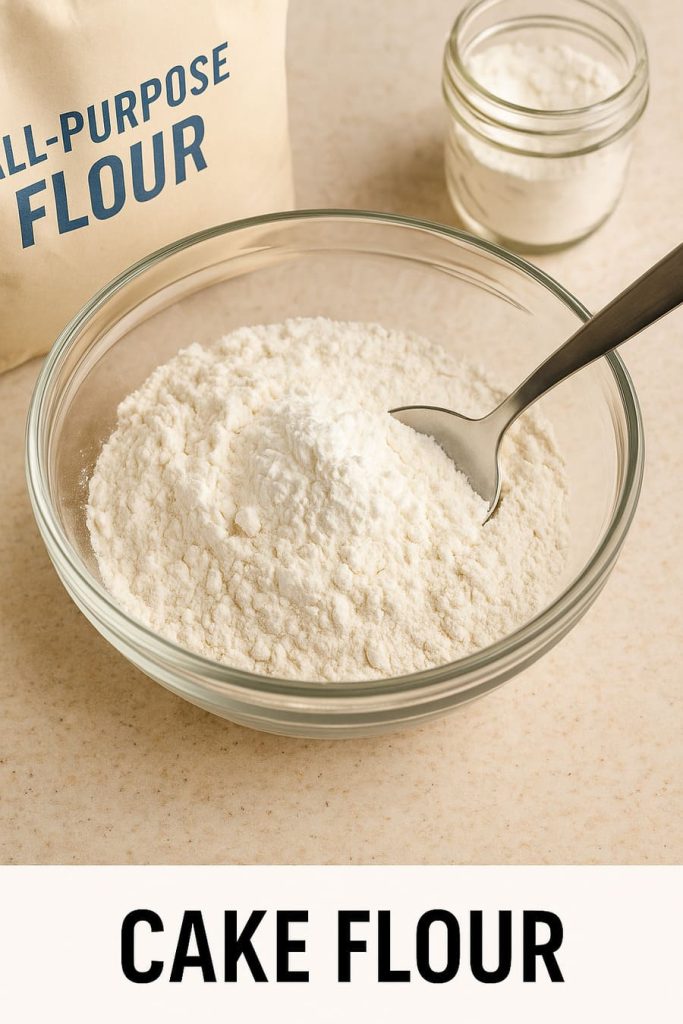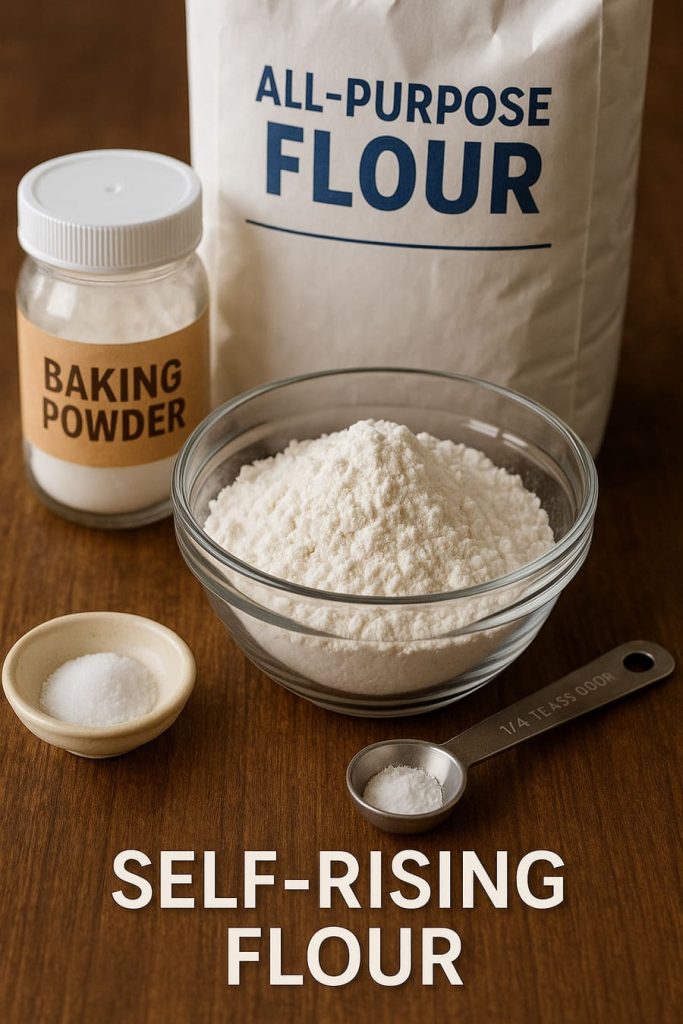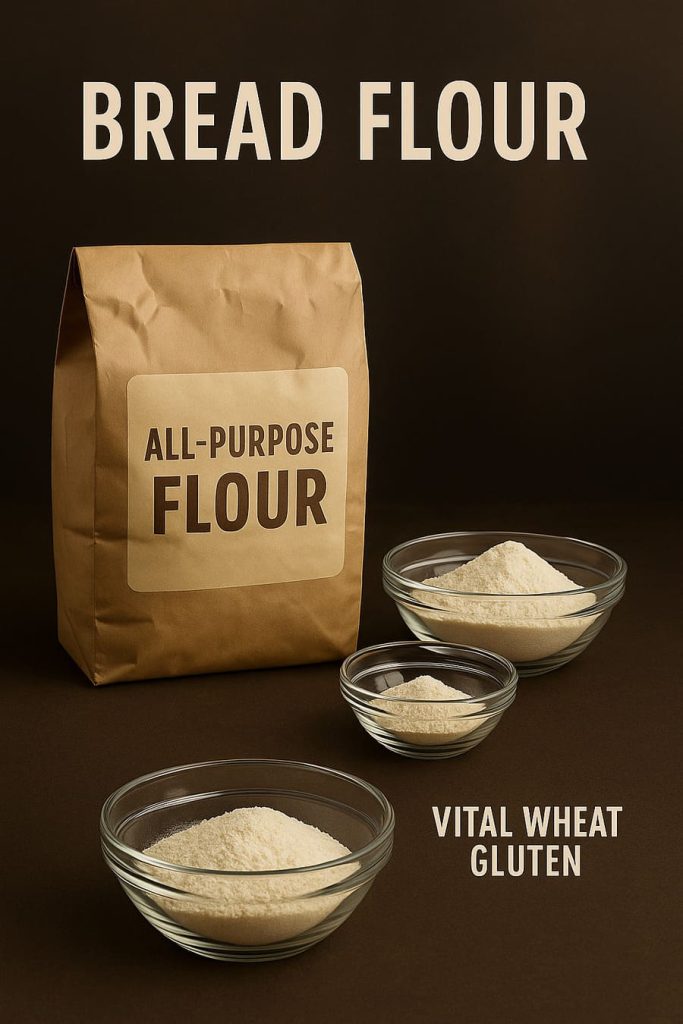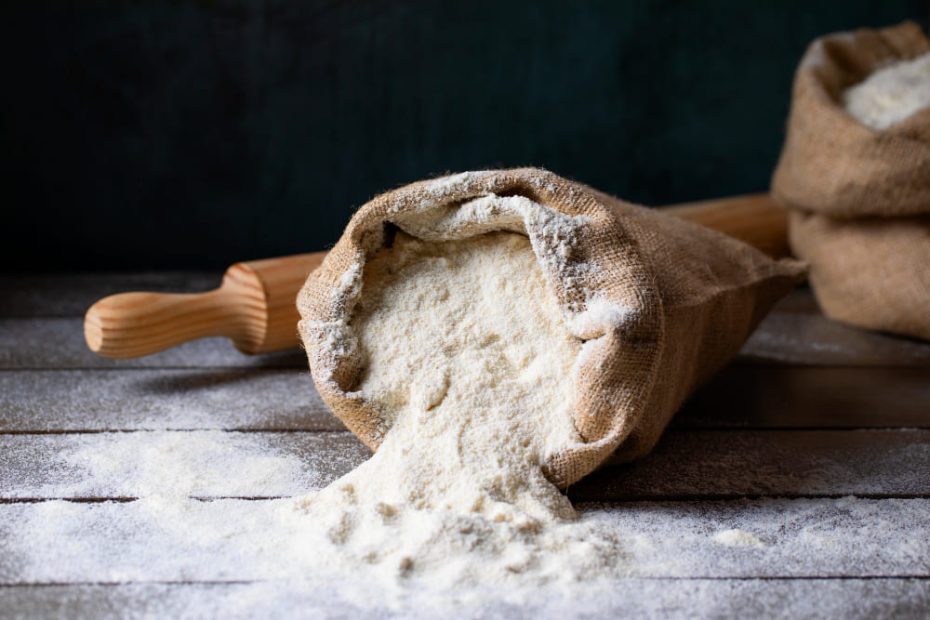“You’re halfway through baking, mixing, measuring, maybe making a little mess and then boom. The recipe asks for cake flour. Not just any flour. Cake flour. And you’re staring at your bag of all-purpose like… seriously?” Or bread flour Or that mysterious self-rising flour. You pause, You open the pantry, You have nothing but your trusty bag of all-purpose flour. Cue the dramatic sigh.
Here’s the good news: you don’t need to dash to the store or abandon your baking dreams.
Most specialty flours are just all-purpose flour in disguise. With a little tweaking consider it culinary DIY, you can turn your regular flour into the exact kind your recipe is begging for. Today, we’re pulling back the curtain on how to make cake flour, self-rising flour, and bread flour at home with ingredients you likely already have on hand.
This is not a baking hack. It is a superpower. One that is affordable, ridiculously convenient, and might just save your next batch of muffins from flat mediocrity.
Homemade Flour Substitutes Explained
Now let’s get into it.
All-purpose flour is baking’s Switzerland, neutral, reliable, and always on your side. But the magic other flours possess lies in their protein content, or sometimes, extra ingredients like leavening agents.
Here’s an analogy that will stick: think of flour like a pair of pants. All-purpose is your everyday straight-leg favorite, it works for most things. Cake flour? Your soft, fancy linen pants, light and delicate. Bread flour? Heavy-duty denim that’s made to stretch and hold. And self-rising flour? Pants with shapewear support and lift built right in.
Understanding how to remix your all-purpose flour isn’t just smart, it’s liberating. Whether you’re baking on a budget, hate food waste, or just want to avoid another trip to the store, homemade flour substitutes have your back.
And here’s the mind-blowing part: Your homemade cake flour, bread flour, and self-rising flour? They work just as well as the store-bought kind. Seriously.
Let’s dive into the DIY magic.
1. Cake Flour

How It Works:
Cake flour’s kind of the softie in the flour family. It’s super light, super fine, and makes your baked goods come out tender and airy. Why? It has less protein than regular flour, which means it forms less gluten and that’s what gives cakes that soft, almost melt-in-your-mouth texture we all love.
DIY Formula:
Take 1 cup of all-purpose flour, scoop out 2 tablespoons, and replace them with 2 tablespoons of cornstarch. Then sift it. Twice if you’re feeling fancy.
Why cornstarch? It dilutes the protein content and adds softness, resulting in that pillow-like texture that cake dreams are made of.
Best For:
- Cakes
- Cupcakes
- Muffins
- Pastries that need to be airy and elegant
Pro Tip:
Use this DIY version when you want your cake to feel like a cloud. Seriously, try it once and you’ll taste the difference.
2. Self-Rising Flour

Why It’s Useful:
Self-rising flour is your pantry’s multitasker. It’s pre-equipped with leavening agents baking powder and salt, so it takes the guesswork (and extra measuring) out of quick breads and baked goods.
Consider it a baking mix that does the work for you, a shortcut that doesn’t require cutting any corners.
DIY Formula:
- To make 1 cup of self-rising flour, combine:
- 1 cup all-purpose flour
- 1½ teaspoons baking powder
- ¼ teaspoon salt
- Stir or sift briefly to mix evenly.
Best For:
- Pancakes
- Biscuits
- Scones
- Quick breads
Mind-Blowing Note:
You know how self-rising flour is a Southern cook’s best friend? Yep, those flaky Southern biscuits that are like a buttery hug in a pan? Many of them start with this mix.
3. Bread Flour

What Makes It Special:
Bread flour is the workhorse. The Arnold Schwarzenegger of flours. Why? More protein, typically 12-14%, compared to 10-11% in all-purpose flour. That extra protein creates more gluten, which yields chewy, structured, elastic dough. It’s what gives your homemade bread that professional “tear-and-stretch” texture.
DIY Formula:
- To make 1 cup of bread flour:
- Start with 1 cup all-purpose flour
- Add 1 tablespoon vital wheat gluten
- Mix.
If you bake bread on a regular basis, keeping a bag of vital wheat gluten in your pantry is a complete game-changer. It’s a protein supplement for your flour, essentially, and a tablespoon totally transforms your dough’s behavior.
Best For:
- Yeast breads
- Pizza dough
- Rolls
Anything that can benefit from chewiness and structure
Pro Tip:
If you don’t have vital wheat gluten, you can use all-purpose flour to make bread, but it won’t be as chewy or structured. Worth the upgrade if you’re a serious baker.
Conclusion:
Your Flour Just Leveled Up
Next time a recipe calls for a specialty flour, don’t panic and don’t get out of your pajamas to head to the store.
You now possess the know-how to transform everyday all-purpose flour into cake flour for feather-light cupcakes, self-rising flour for speedy biscuits, and bread flour for crispy loaves and chewy pizza. With some pantry staples and a quick mix, you can reach a new state of baking liberation.
So go ahead. Play around. Empower your flour. And maybe include “bakery magician” on your résumé while you’re at it.
Since now, you’re not a baker, you’re a flour alchemist.

Numrah Fareed is a freelance writer and home organization enthusiast with a passion for practical, eco-friendly living. When not typing away at her desk, she’s experimenting with DIY cleaning hacks and helping readers simplify their routines one tip at a time.
